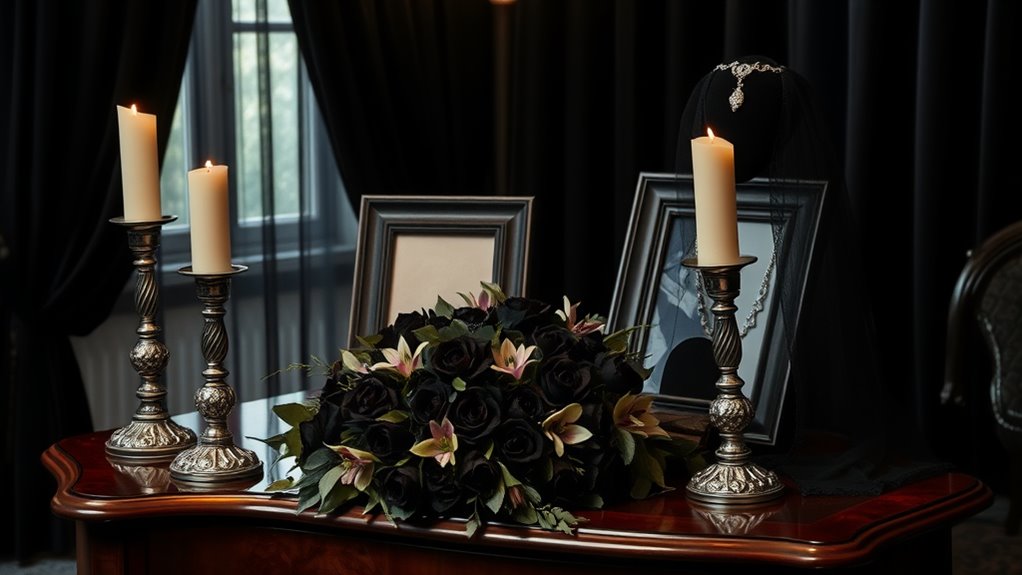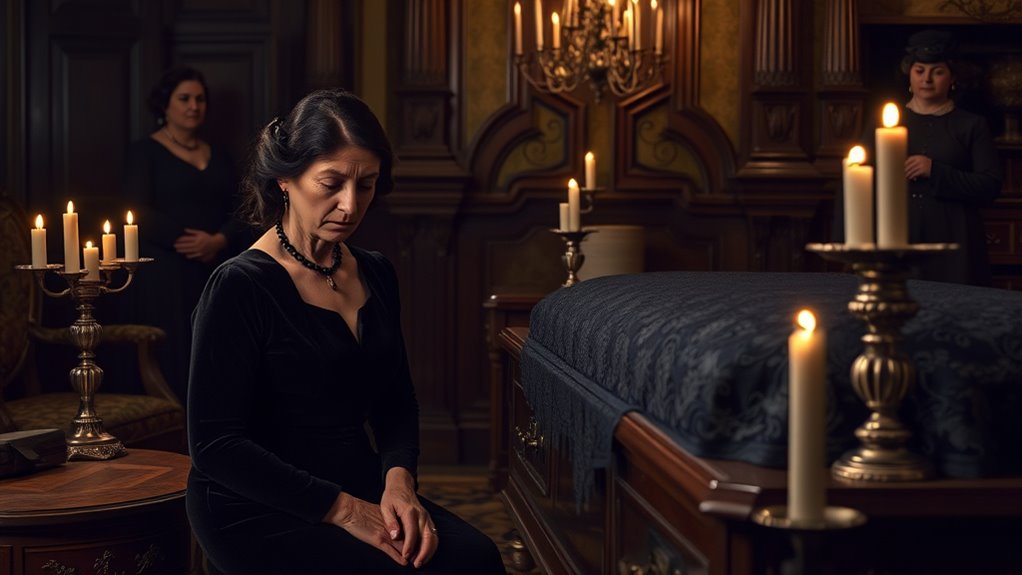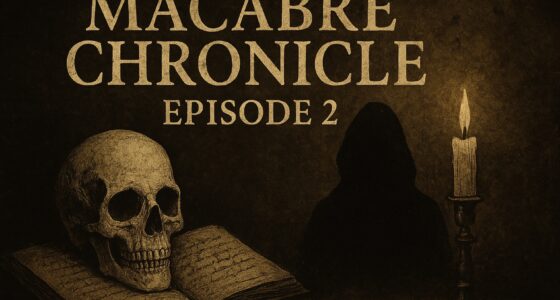Victorian mourning rituals originated from societal norms that emphasized respect, propriety, and emotional restraint after a loved one’s death. You would wear somber, black attire, symbolizing grief and societal status, while jewelry made from dark materials served as keepsakes. These customs created a visible language of mourning, reinforcing social cohesion and personal loss. If you want to understand how these traditions shaped Victorian society and their deeper meaning, there’s more to uncover.
Key Takeaways
- Victorian mourning rituals originated from strict social codes emphasizing respect, grief, and remembrance during the 19th century.
- These rituals included wearing specific mourning attire, primarily black clothing, to publicly display grief.
- Mourning jewelry, made from dark materials and personal keepsakes, symbolized ongoing remembrance of the deceased.
- Extended periods of mourning, especially for widows, reflected societal expectations of emotional restraint and reverence.
- Rituals reinforced social cohesion by creating a shared, visual language of grief and respect within Victorian society.

Have you ever wondered how the Victorians expressed their grief? During the Victorian era, mourning was more than just a private emotion; it became a highly ritualized social practice. People believed that how they dressed and presented themselves after a loved one’s death could reflect their mourning status and respect for the deceased. Funeral attire was carefully chosen to convey a specific message of sorrow and respect. Typically, it was somber and conservative, often consisting of black dresses for women and dark suits for men. Women’s clothing might include black skirts and blouses, sometimes with veils or mourning caps, while men wore black or dark-colored suits, often with a black arm band if they couldn’t attend the funeral. These choices weren’t random—they were part of a strict social code that signaled one’s grief and adherence to societal expectations. The color black became the universal symbol of mourning, a visual language understood by all.
Alongside funeral attire, mourning jewelry played a *fundamental* role in Victorian mourning rituals. This jewelry wasn’t just decorative; it was a tangible expression of grief and remembrance. You might have worn a ring with a loved one’s hair encased inside or a cross pendant inscribed with a loved one’s initials. Mourning jewelry was often made from black materials like jet, onyx, or dark glass, further emphasizing the somber tone of mourning. These pieces served as keepsakes, allowing mourners to keep a part of the deceased close to them. They also functioned as social signals, demonstrating your mourning status and respect for the departed. The jewelry could be simple or elaborate, depending on the relationship with the deceased and the social standing of the mourner. Widows, for example, often wore extensive mourning jewelry for extended periods, sometimes for years, to visibly show their ongoing grief. Understanding mourning customs provides insight into how societal values and personal grief intertwined during this period.
This elaborate display of mourning through attire and jewelry was deeply rooted in Victorian beliefs about death and the afterlife. It helped people process loss, express their feelings publicly, and maintain social decorum. By adhering to these customs, mourners demonstrated their respect for the dead and their own emotional restraint. *Essentially*, Victorian mourning rituals created a shared language of grief—visible, tangible, and highly codified—that helped society navigate the complex emotions surrounding death. Through careful selection of funeral attire and meaningful mourning jewelry, Victorians turned their personal loss into a collective experience, reinforcing social bonds and cultural values centered around respect, memory, and reverence for those who had passed away.
Frequently Asked Questions
How Did Mourning Attire Vary Between Social Classes?
Like a mirror reflecting society, mourning attire vividly shows social class distinctions, where fashion and status dictated mourning dress. Higher classes wore elaborate, luxurious garments with fine fabrics and intricate details, emphasizing wealth and social standing. Meanwhile, lower classes adopted simpler, more practical mourning attire, reflecting modest means. This contrast highlights how societal hierarchy influenced mourning rituals, turning grief into a visual statement of social division and personal identity.
What Symbolic Objects Were Commonly Used in Victorian Mourning Rituals?
You’ll notice that symbolic objects like funeral jewelry and mourning jewelry were central to Victorian mourning rituals. These pieces often included lockets containing a loved one’s hair or a miniature portrait, signifying eternal remembrance. Mourning jewelry, typically black or dark in color, expressed grief and respect. People also used mourning badges or crosses, each carrying specific sentimental or spiritual significance, to honor the deceased and show their mourning status.
How Did Mourning Customs Differ Across Regions in Victorian England?
You’ll notice regional funeral traditions and mourning attire varied across Victorian England. In rural areas, customs were more conservative, emphasizing simple, modest dress and quiet ceremonies. In cities, mourning practices became more elaborate, with black crepe clothing and mourning jewelry. These regional differences reflected local customs, social status, and religious influences, shaping how people expressed grief and respect for the deceased across the country.
Were There Specific Rituals for Children’s Mourning Periods?
You’ll find that Victorian child grief rituals included specific mourning periods and attire. Mourning clothing for youth often involved miniature black dresses or suits, symbolizing their innocence and grief. During mourning periods, children participated in rituals like wearing black armbands or veils, and sometimes attended funerals with family. These rituals helped them process loss, emphasizing their delicate position in society’s mourning customs while honoring their loved ones.
How Did Victorian Mourning Practices Influence Modern Grief Customs?
Victorian mourning practices influence modern grief customs by shaping how you honor loved ones today. You might wear mourning jewelry or listen to funeral music, echoing Victorian traditions. These rituals encourage a personal connection to mourning, emphasizing remembrance and respect. Their legacy persists, reminding you to cherish memories and express grief meaningfully, blending past customs with contemporary ways to cope and honor those you’ve lost.
Conclusion
So, next time you complain about skipping a funeral or avoiding black clothes, just remember how the Victorians took mourning to a whole new level of obsession. They turned grief into an elaborate fashion show, proving that mourning was less about loss and more about making a statement—preferably a very dark one. Who knew mourning could be so stylish? Maybe someday, we’ll look back and laugh at our own overly dramatic rituals. Or not.









